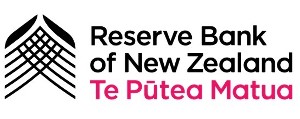
Steve Jurkovich
“The shareholders have signed off the business plan that sees us growing above-system in the next year,” chief executive Steve Jurkovich says.
Lending growth in the year ended June meant Kiwibank’s tier 1 common equity fell to 12.4 percent of risk-weighted assets at June 30 from 13.4 percent a year earlier.
In particular, Kiwibank’s mortgage book grew by $1.83 billion to $18.8 billion in the year ended June, giving it 11.6 percent of new mortgage lending in the year when its market share is only just over 7 percent, based on Reserve Bank figures.
That was a more than fourfold increase on Kiwibank’s new mortgage lending of $438 million the previous year when it accounted for only 3.2 percent of total new mortgage lending.
Jurkovich took over the top job in July last year after a troubled period for Kiwibank.
Its shareholders, New Zealand Post, with 53 percent, the New Zealand Superannuation Fund, with 25 percent, and ACC, with 22 percent, had to stump up with $247 million in fresh capital in 2017.
That was while the Reserve Bank dithered over whether Kiwibank’s capital notes could be counted as capital – the central bank eventually decided they did qualify.
And in the year ended June 2017, the last year of Jurkovich’s predecessor, Paul Brock’s time in the hot seat, Kiwibank had written off $90 million as it scrapped its four-year IT project to replace its banking system.
Even with the additional capital, if Kiwibank continues to grow at its 2019 pace, its capital ratio will continue to decline.
While current rules require its tier 1 ratio to be at least 8.5 percent of risk-weighted assets, the Reserve Bank is proposing to lift that to 15 percent for Kiwibank and the other locally-owned banks while the major four banks will have to have at least 16 percent.
Kiwibank’s shareholders “know there’s some uncertainty around what’s going to happen,” Jurkovich says.
“But if we want to make a difference and be a credible alternative, then we’ve got to keep growing,” he says.
“The whole industry knows it’s facing more demand for capital. A key question will be what instruments will be allowed.”
Kiwibank’s submission on RBNZ’s bank capital proposals argued strongly in favour of the central bank continuing to allow banks to use hybrid securities, those which normally behave as debt but which can be converted to equity if required, as part of their tier 1 capital.
That’s even though RBNZ has made it plain that it doesn’t like hybrid securities.
"There does seem to be a preference for non-hybrid capital instruments. We believe there’s a whole lot of reasons why that should be reconsidered,” Jurkovich says.
Kiwibank’s submission said RBNZ would be aware of Kiwibank’s “significant investment profile/requirement over the next three-to-five years, coinciding with the phase-in period of the new capital requirements.
“On the current outlook, the short- to medium-term returns to shareholders appear low and below any reasonable estimation of the cost of capital,” it said.
Kiwibank’s shareholders have many other investment opportunities. “This creates a substantial risk for Kiwibank that its shareholders may be unwilling to contribute further capital due to a regulatory environment more favourable to Australian banks than New Zealand-owned ones.”
Kiwibank argues it is possible to overcome all RBNZ’s objections to hybrids.




Comments
No comments yet.
Sign In to add your comment